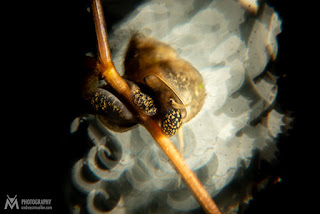Abstract
Macro photography is a unique genre of photography, which focuses on capturing small subjects in extreme detail. One of the artistic techniques that can be utilized in macro photography is the use of bokeh masks to create specific and shaped bokeh effects in the out-of-focus areas of a photograph. This white paper elucidates the concept and practice of using bokeh masks in macro photography and the optical explanation behind it.
Introduction
Bokeh, derived from the Japanese word "boke" meaning "blur" or "haze", is a photographic term used to describe the aesthetic quality of the out-of-focus areas in a photograph. Bokeh masks are physical masks that photographers place in front of their camera lens to shape this out-of-focus blur into specific patterns or designs.
Methodology
1. Materials Needed:
- Camera with a fast lens (typically f/2.8 or larger aperture)
- Macro lens or extension tubes for closer focusing
- DIY or purchased bokeh masks
- External light source (optional)
2. Making a Bokeh Mask:
A bokeh mask can be crafted from a piece of black paper, card, or plastic. Cut out a small shape (e.g., heart, star, or any custom design) in the middle of the card. The diameter of the card should match the diameter of the lens you are using. When the camera is focused on a subject, the out-of-focus light sources or highlights will adopt the shape of the cut-out.
3. Setting Up:
- Mount the macro lens on the camera.
- Place the bokeh mask over the lens.
- Adjust camera settings to a wide aperture (e.g., f/2.8 or larger).
- Focus on the desired subject, ensuring there are light sources or reflective elements in the background.
Optical Explanation
The principle behind the bokeh mask's effect on photographs stems from the way camera lenses handle out-of-focus light sources.
- Aperture Shape: The aperture inside the lens is usually made up of several blades which, when opened or closed, forms a certain shape. Most lenses create a circular aperture, which results in round bokeh balls. The shape of the bokeh mask effectively replaces the shape of the aperture for out-of-focus light sources, thus creating bokeh that matches the shape of the mask.
- Depth of Field: Using a wide aperture reduces the depth of field, meaning a smaller portion of the image is in sharp focus. Everything outside of this zone becomes blurred, making it ideal for the bokeh effect.
- Light Diffraction: When light passes through a small opening (like our bokeh mask shape), it tends to bend and scatter. The shape of the mask constrains this diffraction to its own form, imprinting that shape onto any defocused light within the image.
Applications and Benefits
- Creative Expression: Bokeh masks allow photographers to add a unique and artistic touch to their macro shots. Specific shapes can evoke emotions or enhance the story of the image.
- Enhanced Subject Emphasis: By using distinct bokeh shapes, photographers can draw more attention to their main subject, making it stand out against a creatively blurred background.
- Holiday and Seasonal Photography: Bokeh masks can be tailored for different seasons and holidays, like stars for Christmas or hearts for Valentine's Day.
Conclusion
Macro photography using bokeh masks is an intersection of science and art. While the optical principles underpinning the method are rooted in physics, the results are pure artistry. Through understanding and harnessing these optical effects, photographers can elevate their macro images to new creative heights.


